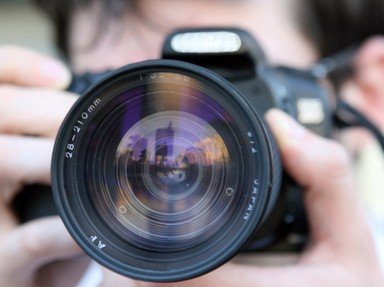Quiz Answer Key and Fun Facts
1. Cameras were independently invented by both the Chinese and the Greeks.
2. What contribution did Johann Heinrich Schulze make to the field of photography in the early 1700s?
3. When Frenchman Joseph Nicéphore Niépce and his brother, Claude, began experimenting with image reproductions, where did his PRIMARY interest lie, aside from developing photographic methods?
4. A Frenchman, Louis Daguerre, invented the first practical application of developing pictures in 1839. His method involved using either silver or copper plates to reflect the images produced by the camera.
By what name were these early resultant pictures known?
5. In 1881 an American farmer invented the first "roll film" camera, which brought photography to new levels among the masses of those who enjoyed taking their own pictures.
What was the name of this farmer who hailed from Cambria, Wisconsin?
6. George Eastman, an entrepreneur from Waterville, New York, founded the Eastman Kodak Company. The brilliance of the mass marketing of cameras and film hit new heights, as many people began taking their own snapshot photos.
Where did George Eastman state that he got the name for his company, Kodak?
7. Color photos were desirable from the very outset of picture-taking, but a man named Thomas Sutton, who used a technique proposed by James Clerk Maxwell, produced the first successful color photograph.
In what year was his photo of a blue, a green, and a red ribbon taken?
8. A camera with self developing film was introduced to the market in 1948.
What U.S. company mass marketed this type of camera that could develop its own pictures in about a minute?
9. In 1934, one of the first 35 millimeter cameras to be used by this country was developed by Canon. This type of film was used most often for still photographs and for motion picture photography.
What nation introduced Canon cameras to the world?
10. With the advent of digital cameras, many people are familiar with the term "pixels", or the technology that provides us with such vivid photographs with brilliant clarity.
What does the acronym "pixel" actually mean?
Source: Author
logcrawler
This quiz was reviewed by FunTrivia editor
WesleyCrusher before going online.
Any errors found in FunTrivia content are routinely corrected through our feedback system.

